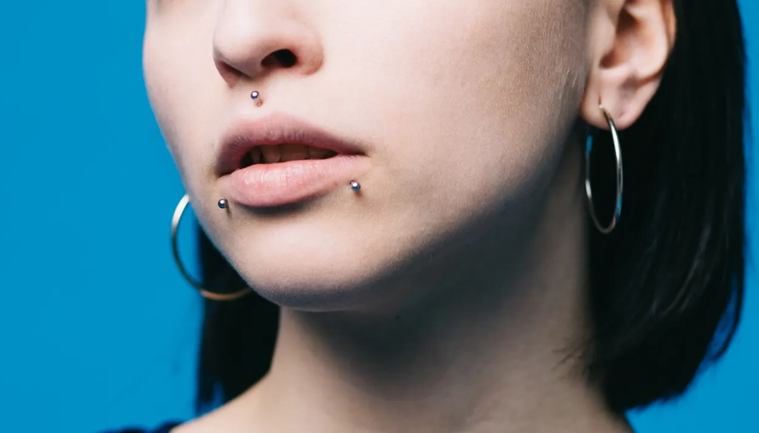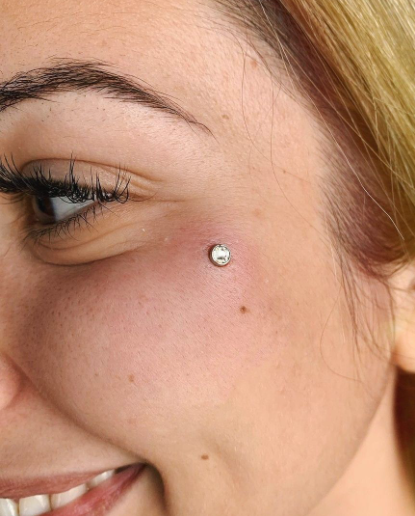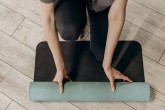Table Of Content
Everything You Need to Know About Dermal Piercing
Piercings have become quite a GenZ statement. Every GenZ has at least one or two piercings on average. Dermal piercing or micro dermal piercing has become popular because of its ability to modify body parts that would be difficult to pierce otherwise. Dermal piercing is the piercings that settle flat on top of the dermis without any exit point.
A long anchor of 6-7 mm is inserted into the dermis, which lays flat on the top. Jewelry is then set on top of it. In surface piercing, there is a barbell that pinches the skin and has an entry and exit passageway.
Dermal piercings have become a thing for people who want to modify their flat surfaces into something fun. However, one should know every detail about the process before doing the damage. Read out this article to know more about dermal piercing and what are the things that come as a liability.
Important Things to Know Before Opting for Dermal Piercing
Pain and Tolerance
Different people have different pain tolerance. For some people, it is just discomfort, whereas for others, it’s mild pain. Pain also depends on the site you’re choosing to get pierced, nerve distribution, and the dilation of veins. Discuss your concerns with your piercer for a smooth experience.
How Much It Costs
The cost of piercings depends on the studio. Every studio has its service charges topped with tips and aftercare products. On average, a well-reputable piercer charges around $80 to $100. They also charge separately for the jewelry pieces you add to your piercing. Make sure to consult the studio beforehand.
Common Areas for Dermal Piercing
The best area for dermal piercing is any flat surface of the body. The most common areas where you can do piercing are the lower back, chest, thighs, back of the neck, cheekbones, dimples, and the back of your neck. You can also do this process to highlight any part of your body that you love.
Healing Process
In a usual case, it takes around a month or three for the piercing to heal. It depends on how you are doing the aftercare. You are piercing your body part, so there might be some discomfort and swelling. Look out for any infection in the area and consult a doctor if the healing is delayed.
How To Do Aftercare
After the process is done, it is extremely important to take care of your dermal. Use a clean towel to pat dry your sit and apply a band-aid. Do this procedure for seven days straight and then stop applying it after that. Maintain good hygiene, and your dermal will be healed.
Cons Of Dermal Piercing
It sounds fascinating to highlight your body part, but you are changing your anatomy, and that does come with a price. It can cause tissue damage, hyper granulation, infection, and scarring. Maintaining proper hygiene is the key to avoiding these cons of dermal piercing.
Type Of Jewelry Material to Be Used
Choosing the right jewel material for your piercing is extremely important. The most common materials to be used are Titanium, implant-grade stainless steel, and niobium. The most widely used material is stainless steel unless the person is sensitive to it. Titanium comes in handy for these sensitive people. Niobium is rarely used, but the light weight of this material comes in handy.
Conclusion
Dermal piercings have become the standard for beautifying one’s body parts. It does come with a lot of different processes, but the pain and healing are worth the wait. There is no age limit to get your favorite part pierced. If you love something, you can always pierce them with something.
I have personally never done a piercing on myself because of the needle fear, but those cool pictures always make up my mind to get one. Having that little piece of jewel dedicated to your part and drawing a tattoo around it sounds super fun until the needle part comes in. Technologies have advanced now, and it’s no more convenient to get done with painless procedures.
Author










Top 10 Travеling Tips for Pеt Ownеrs
Best Body Washes For Dry Skin Under $50
8 Best Moisturizers for Mature Skin
How to Curl Your Hair to Make Your Style Last
Barbie Tattoo Ideas for the Doll-Loving Ink Enthusiasts
Selena Gomez and Hailey Bieber Drama Takеs thе Spotlight In Entеrtainmеnt Nеws
Michael Kors Shoes: The Perfect Addition to Your Shoe Collection
Lululemon Yoga Mats: Which One Is Best for You?